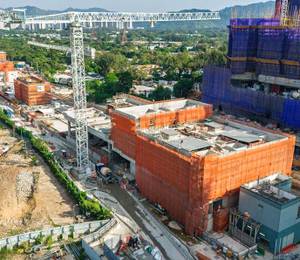Amid the Covid-19 crisis, governments across Asia Pacific (APAC) are seeking to advance investment in infrastructure to boost their economies. Among the countries in the region, five major markets – namely Philippines, Vietnam, Singapore, China and India - have ‘very good’ prospects to accelerate investment in infrastructure projects, according to latest research by data and analytics company GlobalData.
Prior to the Covid-19 pandemic, governments in the APAC region had been investing heavily in infrastructure. GlobalData identified that in the past five years, the value of global infrastructure construction grew by 3.2% on an annual average basis in real terms. This growth was driven by Asia, with infrastructure construction in Northeast Asia growing at 5.4%, a year on average and South and Southeast Asia growing at 6.8%.
The Covid-19 crisis has created unprecedented economic disruption in the region, with containment measures bringing many economies and key sectors to a standstill. Consequently, the overall economic growth for the region (excluding China) will drop to just 0.5% in 2020, said GlobalData, down from an average of over 7% in the past five years. As a result, investment will decline, notably hitting commercial, industrial and residential construction.
Danny Richards, lead economist at GlobalData explained, “Governments and public authorities will likely be aiming to advance spending on infrastructure projects as soon as normality returns, so as to reinvigorate the construction industry and the wider economy. This will spread across all areas of transport infrastructure and energy and utilities. Investment in infrastructure is generally considered to have a high multiplier effect, with the overall increase in economic value being higher than the value of direct investment itself.”
GlobalData has assessed a range of factors to determine the prospects for accelerating investment in infrastructure projects. These factors include the extent to which the project pipeline is sufficiently advanced to enable works to be ramped up, or for the final approvals and awards to be completed post-haste. In colloquial terms, there needs to be a pipeline of ‘shovel ready’ projects rather than high proportion of projects still in the early planning stages and facing a bottleneck in terms of advancement.
The assessment also considers political momentum, in terms of whether the incumbent administration has already laid out a long-term investment programme, and is in a strong position to follow through on its policy agenda during this crisis period. The government’s fiscal position is also taken into consideration. With interest rates falling to record lows, borrowing costs will be at a minimum, making it a relatively cost-effective period for governments to push ahead with investments.
However, the scope for governments to spend heavily on infrastructure will be dependent in part on their current financial standing. With most government prioritising direct support to businesses and households, their capability to invest in the infrastructure segment is likely to be constrained, especially in countries with high debts.
Mr Richards concluded, “The long-term prospects for infrastructure investment in the APAC remain positive, reflecting the need to expand and modernise transport infrastructure and utilities to cope with the region’s demand growth amid rising economic prosperity and urbanisation.”
Image: Nghia Nguyen/Pixabay











